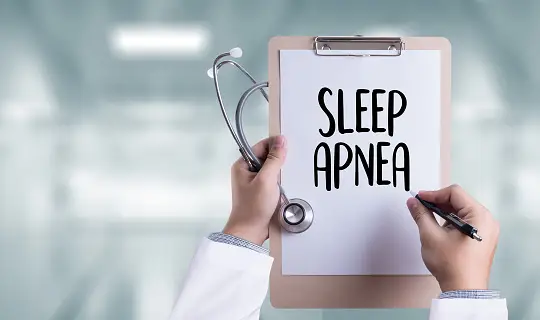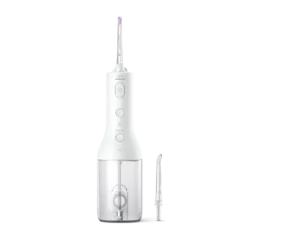Sleep apnea is a sleep disorder characterized by pauses in breathing or periods of shallow breathing during sleep. It’s a serious condition that can lead to various health complications.
Sleep apnea is a common yet potentially severe condition, affecting millions worldwide. Recognizing its symptoms is crucial; they include loud snoring, choking or gasping during sleep, and feeling unrefreshed upon waking. People with sleep apnea often experience daytime fatigue, which can impair their ability to function in daily activities and increase the risk of accidents.
The disorder can be categorized into two main types: Obstructive Sleep Apnea (OSA), due to physical blockages, and Central Sleep Apnea (CSA), caused by brain signal issues. Early diagnosis and treatment are essential in managing sleep apnea and can significantly improve the quality of life for those affected. Treatment options range from lifestyle changes and breathing devices to surgery, depending on the severity and type of sleep apnea.

What Is Sleep Apnea?
Sleep apnea is a serious sleep disorder that can have significant health repercussions. It is characterized by repeated interruptions in breathing during sleep. These pauses can last from a few seconds to minutes and may occur 30 times or more an hour. This chronic condition disrupts sleep and results in poor-quality rest, making you feel tired upon waking and increasing the risk of other health complications.
Definition Of Sleep Apnea
Sleep apnea is defined as a disruption of breathing while asleep. The term “apnea” originates from the Greek word “apnoia,” which means “without breath.” People with sleep apnea cease breathing repeatedly through the night, a startling fact that highlights the condition’s severity. It often leads to a decrease in blood oxygen saturation, awakening the individual as the body reacts to the lack of oxygen.
Types Of Sleep Apnea
There are mainly three types of sleep apnea, each with distinct causes and treatments:
- Obstructive Sleep Apnea (OSA): The most common form, caused by a blockage of the airway when the soft tissue at the back of the throat collapses during sleep.
- Central Sleep Apnea (CSA): Occurs when the brain fails to signal the muscles that control breathing due to instability in the respiratory control center.
- Mixed Sleep Apnea: Also known as Complex Sleep Apnea, is a combination of both obstructive and central sleep apnea symptoms.
Understanding these types is crucial for proper diagnosis and treatment, which may involve lifestyle changes, devices to keep the airway open, or surgery, depending on the severity and type of apnea.
Signs And Symptoms
If you often wake up feeling less than refreshed, or your partner complains about your snoring, you might be facing a common yet serious condition known as sleep apnea. Recognizing the signs and symptoms early can be critical for your health and well-being. Let’s dive into the common indicators and the impact this condition can have on your sleep quality.
Common Signs Of Sleep Apnea
Sleep apnea can often go unnoticed, as it manifests primarily during sleep. Notable signs include:
- Loud snoring, is often more prominent in obstructive sleep apnea.
- Episodes where you stop breathing during sleep — often reported by another person.
- Gasping for air during sleep, indicating a struggle to breathe properly.
- Morning headaches due to fluctuating oxygen levels during the night.
- Ongoing daytime drowsiness or fatigue, regardless of a full night’s sleep.
- Waking up with a dry mouth or sore throat.
- Difficulty concentrating during the day.
- Irritability or mood changes.
Impact On Sleep Quality
Sleep apnea has profound effects on your overall sleep quality. It disrupts the normal sleep cycle, leading to:
| Impact | Description |
| Fragmented Sleep | Frequent awakenings prevent deep, restorative sleep phases. |
| Excessive Daytime Sleepiness | The body lacks the energy from a peaceful night’s sleep, resulting in fatigue and sleepiness. |
| Decreased Cognitive Function | Memory, attention, and decision-making skills can diminish due to poor sleep quality. |
Diagnosing Sleep Apnea
Sleep apnea is a disorder characterized by pauses in breathing or periods of shallow breathing during sleep. As this can lead to serious health complications, accurate diagnosis is crucial. The following sections explore the different methods and tests used to diagnose sleep apnea, as well as the importance of detecting the condition early on.
Diagnostic Methods And Tests
Identifying sleep apnea involves a multi-faceted approach that combines patient history, physical examination, and various specialized tests. Here are the primary diagnostic tools used:
- Polysomnography (PSG): An overnight sleep study that records brain activity, eye movements, heart rate, blood pressure, oxygen levels, and breathing patterns.
- Home Sleep Apnea Testing (HSAT): A simplified version of PSG, conducted at home, to measure airflow, breathing patterns, and oxygen levels.
- Oximetry: This portable device measures oxygen saturation levels and can be used at home, but it is less comprehensive than PSG and HSAT.
- Multiple Sleep Latency Test (MSLT): Measures how quickly you fall asleep during the day to assess daytime sleepiness.
- Epworth Sleepiness Scale: A questionnaire that evaluates daytime sleepiness.
- Physical examination: An ENT doctor may check for obstructions or abnormalities in the airway.
Importance Of Early Detection
Catching sleep apnea early can greatly reduce the risk of complications such as hypertension, cardiovascular disease, and diabetes. Early detection is also associated with improved cognitive function and better overall quality of life. Examine the following key points that emphasize the need for prompt diagnosis:
- Lowered risk of complications due to sleep apnea.
- Increased effectiveness of treatment options when started early.
- Prevention of secondary conditions such as stroke or heart failure.
- Improvement in day-to-day performance and reduction in accidents related to sleep deprivation.
Treatment Options
Understanding the available treatment options for Sleep Apnea is crucial for those who live with this sleep disorder. Proper management can significantly improve quality of life and reduce the risk of related health complications. Treatments range from simple lifestyle modifications to medically prescribed interventions. Here, we explore the various strategies to take control of Sleep Apnea.
Lifestyle Changes And Management
Lifestyle changes play an integral role in the management of Sleep Apnea. For many, these adjustments can lead to substantial improvements. Key modifications include:
- Weight Loss: Reducing body weight can relieve constriction of the throat.
- Sleep Position: Altering sleep posture to avoid back-sleeping can decrease apnea events.
- Alcohol Moderation: Limiting alcohol consumption before bedtime helps prevent relaxation of the throat muscles.
- Quit Smoking: Smoking cessation is recommended, as it can worsen Sleep Apnea.
- Regular Exercise: Engaging in physical activity can improve energy levels and Sleep Apnea symptoms.
CPAP Therapy And Other Interventions
CPAP (Continuous Positive Airway Pressure) therapy is the frontline treatment for moderate to severe Sleep Apnea. This therapy involves a machine that delivers air pressure through a mask while you sleep, keeping airways open. Other noteworthy interventions include:
| Intervention | Description |
| BiPAP | Provides two levels of pressure for inhaling and exhaling. |
| ASV | Adaptive servo-ventilation adapts to your normal breathing pattern and provides support when needed. |
| EPA | Expiratory Positive Airway Pressure, is often used for mild cases of Sleep Apnea. |
| Oral Appliances | Custom-fit devices that support the jaw in a forward position to help keep the airway open. |
| Surgery | Procedures to remove tissue or correct anatomical issues that contribute to airway blockage. |
Impact On Health
The ‘Impact on Health’ when it comes to Sleep Apnea cannot be underestimated. This sleep disorder does more than just disrupt a good night’s rest. It is a pervasive condition affecting millions of people, bearing significant consequences on numerous aspects of health and well-being. A thorough understanding of Sleep Apnea’s ripple effects is essential not only for those suffering from the condition but also for those around them.
Correlation With Other Health Conditions
The intricate web of health conditions interlinked with Sleep Apnea is extensive. The repeated interruption of breathing during sleep that characterizes this condition does more than elicit snoring – it can lead to a cascade of other health issues:
- High Blood Pressure: The strain on the cardiovascular system can result in persistent hypertension.
- Heart Disease: The risk for heart attacks and heart failure increases alarmingly with the presence of untreated Sleep Apnea.
- Type 2 Diabetes: There exists a strong double-sided correlation between Sleep Apnea and insulin resistance.
- Obesity: Weight gain and Sleep Apnea often reinforce each other, creating a challenging cycle to break.
- Metabolic Syndrome: This cluster of conditions, including increased blood pressure, high blood sugar, and abnormal cholesterol levels, is frequently associated with Sleep Apnea.
Sleep Apnea’s connection with other health challenges is both profound and multifaceted, demanding attention and proactive management.
Long-term Effects On Overall Well-being
The shadow cast by Sleep Apnea on long-term well-being is undeniable, impacting individuals far beyond mere daytime sleepiness. Its extended effects permeate an individual’s quality of life:
| Aspect of Well-Being | Impact of Sleep Apnea |
| Cognitive Function | Memory impairment, inability to concentrate, |
| Emotional Health | Increased risk of depression, mood swings, |
| Physical Performance | Reduced vigor and energy, |
| Social Interactions | The strain on personal and professional relationships, |
| Life Expectancy | Potential reduction due to associated health risks. |
The cumulative burden of these impacts is significant, shaping how an individual experiences day-to-day living and how they plan for the future.
Effective management and treatment of Sleep Apnea can mitigate these long-term effects, significantly improving life quality and health prospects. Regular consultations with healthcare providers, continuous positive airway pressure (CPAP) therapy, and lifestyle changes are among the crucial steps toward better sleep and a healthier life.
Sleep Apnea And Children
Among the myriad challenges facing today’s health-conscious families, Sleep Apnea in Children is a critical topic that’s catching the attention of parents and healthcare professionals alike. While often undiagnosed or overlooked, pediatric sleep apnea can have profound effects on a child’s well-being, growth, and daily functioning. Understanding the nuances of this condition in the context of young patients is essential for promoting healthier outcomes and ensuring adequate care.
Unique Considerations For Pediatric Cases
Children are not just small adults, and this is especially true in the realm of sleep disorders. Pediatric sleep apnea is a condition that warrants a unique approach due to the developmental changes that children undergo. Unlike adults, children with sleep apnea may demonstrate symptoms like inattentiveness, hyperactivity, or developmental delays rather than the more typical daytime drowsiness.
- Physical Development: A child’s airway is smaller and the tonsils and adenoids are relatively larger, which can increase the risk of obstruction.
- Behavioral Symptoms: Rather than the classic snoring and gasping for air, a child may exhibit behavioral changes, such as irritability or difficulty concentrating.
- Growth Impairment: Sleep apnea can affect a child’s growth hormone production, potentially leading to growth issues.
Effective screening through observations at home and by school officials, along with regular medical check-ups, is crucial for catching early signs of sleep apnea in children.
Challenges And Approaches In Diagnosis And Treatment
Diagnosing and treating sleep apnea in children presents a series of distinctive challenges. Accurate identification is complicated by the variability of symptoms and the difficulty in distinguishing from other childhood behavioral issues.
| Challenge | Approach |
| Misdiagnosis: Symptoms may mimic other disorders such as ADHD. | Comprehensive evaluation involving sleep studies like polysomnography to confirm diagnosis. |
| Non-Invasive Options: Children may struggle with CPAP therapy. | Exploration of alternative treatments such as oral appliances or positioning strategies during sleep. |
| Parental Awareness: Lack of awareness can delay seeking treatment. | Outreach and education for parents regarding sleep apnea symptoms and consequences. |
Treatment plans must be carefully tailored to each child, taking into account factors such as age, overall health, and tolerance for specific therapies. A multidisciplinary approach, often involving ENTs, pediatricians, pulmonologists, and sleep specialists, ensures a comprehensive treatment strategy that addresses all facets of the child’s health.
Early intervention and individualized care are paramount. With informed strategies and a supportive healthcare team, children can overcome the hurdles of sleep apnea and thrive in their critical development years.
Sleep Apnea And Weight
Exploring the intricate relationship between sleep apnea and body weight reveals a complex interplay impacting health. This section of the blog delves into how excessive weight often contributes to the development of sleep apnea and the positive effects weight management can have on alleviating this condition.
Connection Between Weight And Sleep Apnea
Obesity is a key risk factor for sleep apnea, with excess weight contributing to airway obstruction during sleep. Fat deposits around the neck and abdomen can apply pressure on the respiratory system, exacerbating breathing difficulties. Statistics show a stark correlation:
- A significant percentage of individuals with obstructive sleep apnea are either overweight or obese.
- BMI (Body Mass Index) and neck circumference serve as predictors for the condition.
- Weight gain can increase the severity of existing sleep apnea.
Understanding this connection is critical in recognizing the necessity of weight management as part of a comprehensive treatment plan for sleep apnea.
Strategies For Weight Management And Its Impact
Addressing weight issues can have a profound effect on reducing the symptoms of sleep apnea. Here are strategies that can aid in effective weight management:
| Strategy | Description | Impact |
| Dietary Changes | Integrating a balanced, low-calorie diet focusing on whole foods. | May reduce fat deposits, leading to improved respiratory function. |
| Regular Exercise | Incorporating aerobic and strength training activities into daily routines. | Enhances weight loss and can potentially alleviate sleep apnea severity. |
| Sleep Hygiene | Adopting consistent sleep schedules and conducive sleep environments. | Fosters better sleep quality, aiding in overall health and weight control. |
Combining these strategies not only helps in shedding excess pounds but also plays a significant role in reducing the number of apnea events per night. A comprehensive approach, under medical supervision, ensures the best outcomes.
Embracing weight management can also have a positive ripple effect on other health markers, such as blood pressure, cholesterol levels, and insulin sensitivity, which are often affected by sleep apnea.
Sleep Apnea And Mental Health
Sleep apnea is not just a disorder that disrupts your sleep; it has broader implications that ripple into your day-to-day mental health. When the quality of sleep suffers, the mind often bears the brunt of this deprivation. The intertwining of sleep apnea and mental health is a critical area ripe for exploration, as understanding this relationship is essential for those looking to improve both their sleep and mental wellness. In the following sections, we’ll delve into how sleep apnea impacts mental wellness and the strategies one can employ to cope with these interconnected issues.
Relationship With Mental Wellness
The effects of sleep apnea on one’s mental health can be profound and multifaceted. Research suggests a strong bidirectional connection between sleep apnea and conditions such as depression, anxiety, and cognitive decline. People with sleep apnea may experience alterations in mood, increased stress levels, and reduced cognitive functions due to interrupted sleep patterns and decreased oxygen levels in the brain during sleep. These findings underscore the importance of recognizing sleep apnea as more than a physical ailment—it’s a critical component of one’s overall mental well-being.
Coping Strategies And Support Resources
Thankfully, various strategies and resources are available to help manage the interplay between sleep apnea and mental health. A step-by-step approach that encompasses both medical intervention and self-help can pave the way to a better quality of life. Here’s a list of potential strategies to consider:
- Lifestyle modifications such as weight loss, smoking cessation, and regular physical activity can significantly reduce sleep apnea symptoms.
- Engaging with therapy, including cognitive-behavioral therapy (CBT) for both sleep disorders and mental health challenges.
- Exploring medical treatments including Continuous Positive Airway Pressure (CPAP) machines or dental appliances, with the guidance of a healthcare professional.
- Joining support groups for individuals struggling with sleep apnea can offer a sense of community and shared experience.
- Practicing relaxation techniques, such as meditation or deep breathing exercises before bed to improve sleep quality and reduce anxiety.
In addition to these self-directed activities, numerous support resources can provide assistance and information. Sleep clinics, online forums, mental health hotlines, and healthcare providers are valuable allies in the journey to overcome the challenges posed by sleep apnea and its impact on mental health.
Frequently Asked Questions On Sleep Apnea
What Is Sleep Apnea?
Sleep apnea is a sleep disorder where breathing repeatedly stops and starts. It can cause snoring and feelings of tiredness even after a full night’s sleep.
How Is Sleep Apnea Diagnosed?
Doctors typically diagnose sleep apnea based on medical history, a physical exam, and sleep study results. Sleep studies can be done at home or in a lab.
What Are Common Sleep Apnea Symptoms?
Common symptoms include loud snoring, episodes of stopped breathing, abrupt awakenings with gasping or choking, and excessive daytime sleepiness.
Can Sleep Apnea Be Cured?
Sleep apnea is a chronic condition that requires long-term management. Lifestyle changes, mouthpieces, surgery, and breathing devices can help relieve symptoms.
Conclusion
Understanding sleep apnea is crucial for overall well-being. This disorder, when left unchecked, can lead to serious health consequences. Embrace proper sleep hygiene, and medical advice, and consider lifestyle changes. Remember, a night of sound sleep isn’t just a comfort; it’s a pillar of health.
Consider the steps discussed to safeguard your rest, and in turn, your health.






